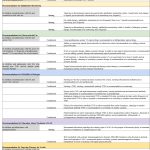One particular issue unique to adult JIA is the management of uveitis. If the patient had uveitis as a child, it is prone to recur and regular ophthalmological care is indicated. If the patient never had uveitis, new onset in adulthood is extraordinarily unusual, to the extent that other diagnoses should be considered if it occurs. Further, should uveitis appear, an adult would typically notice symptoms, such as blurry vision, mild photosensitivity, and floaters. For this reason, while we discuss uveitis with our adult JIA patients, we no longer routinely screen patients without prior eye disease for uveitis.7
Conclusions
JIA is different from adult RA, but the differences are minor compared to the similarities. Making the diagnosis requires a particular sensitivity to the physical exam, whereas the history and laboratory studies may be less useful or even misleading. Surveillance of the eyes is essential to detect vision-threatening occult uveitis. Early and effective treatment is mandatory to ensure normal growth and function of the skeleton, and may require treatment strategies that are often more aggressive than those employed in adults. Since JIA persists into adulthood, in many patients, perhaps even the majority, adult centers need to be able to transition these patients and care for them long term. With appropriate education, this is a task for which adult rheumatologists are well prepared.
Dr. Nigrovic is a board-certified pediatric and adult rheumatologist and directs the Center for Adults with Pediatric Rheumatic Illness (CAPRI) at the Brigham and Women’s Hospital. He is assistant professor of medicine at Harvard Medical School in Boston.
References
- Petty RE, Southwood TR, Manners P, et al. International League of Associations for Rheumatology classification of juvenile idiopathic arthritis: Second revision, Edmonton, 2001. J Rheumatol. 2004;31:390-392.
- Henderson LA, Nigrovic PA. New directions in the treatment of juvenile idiopathic arthritis. Int J Clin Rev. 2012;3:3.
- McGhee JL, Burks FN, Sheckels JL, Jarvis JN. Identifying children with chronic arthritis based on chief complaints: Absence of predictive value for musculoskeletal pain as an indicator of rheumatic disease in children. Pediatrics. 2002;110:354-359.
- Heiligenhaus A, Niewerth M, Ganser G, Heinz C, Minden K. Prevalence and complications of uveitis in juvenile idiopathic arthritis in a population-based nation-wide study in Germany: Suggested modification of the current screening guidelines. Rheumatology (Oxford). 2007;46:1015-1019.
- Beukelman T, Patkar NM, Saag KG, et al. 2011 American College of Rheumatology recommendations for the treatment of juvenile idiopathic arthritis: Initiation and safety monitoring of therapeutic agents for the treatment of arthritis and systemic features. Arthritis Care Res (Hoboken). 2011;63:465-482.
- Nigrovic PA, Mannion M, Prince FH, et al. Anakinra as first-line disease-modifying therapy in systemic juvenile idiopathic arthritis: Report of forty-six patients from an international multicenter series. Arthritis Rheum. 2011;63:545-555.
- Nigrovic PA, White PH. Care of the adult with juvenile rheumatoid arthritis. Arthritis Rheum. 2006;55:208-216.
- Foell D, Wulffraat N, Wedderburn LR, et al. Methotrexate withdrawal at 6 vs 12 months in juvenile idiopathic arthritis in remission: A randomized clinical trial. JAMA. 2010;303:1266-1273.
- Gerss J, Roth J, Holzinger D, et al. Phagocyte-specific S100 proteins and high-sensitivity C reactive protein as biomarkers for a risk-adapted treatment to maintain remission in juvenile idiopathic arthritis: A comparative study. Ann Rheum Dis. 2012;71:1991-1997.
- McDonagh JE. Young people first, juvenile idiopathic arthritis second: Transitional care in rheumatology. Arthritis Rheum. 2008;59:1162-1170.
- Tucker L. The YARD Clinic in Vancouver: An original! CRAJ. 2008;18:18-19.


